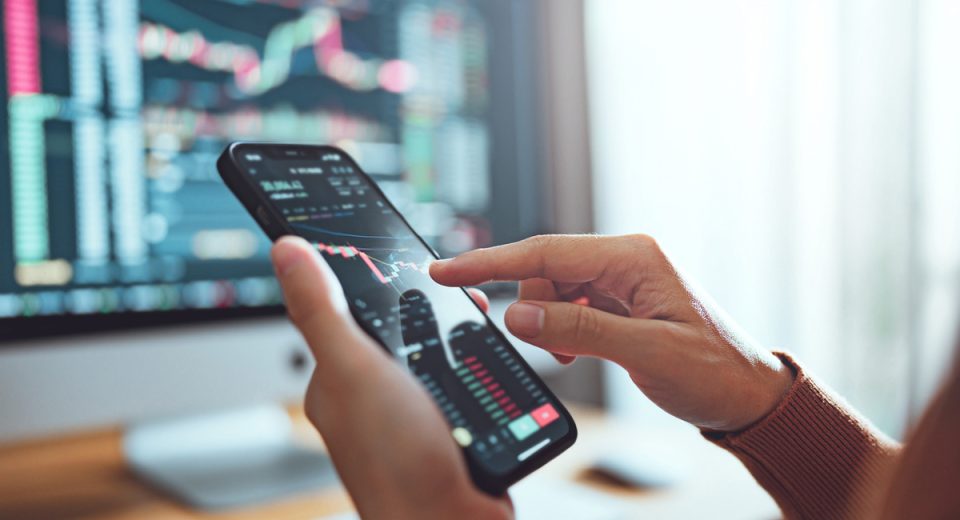Do a Portfolio Health Check: What to Focus On

Much like a health-conscious adult goes for a medical check-up at least once a year, your trading portfolio requires regular health checks too. Afterall, it is a mirror of your financial health. While medical checks are readily available with kits and packages, from preventive to diagnostic checks, a portfolio health check needs to be tailored to your trading psyche and goals.
Why Does a Portfolio Health Check Matter
You do a medical health check to make sure everything is okay and spot any emerging problems early. This helps you ensure timely intervention before the problem becomes more serious. Similarly, your portfolio might have hidden risks or underperforming assets that are bringing down its overall performance. Identifying such situations early can help you limit losses.
A portfolio health check helps:
Uncover Hidden Risks
You regularly make trading decisions based on ongoing market conditions. However, this may make your portfolio over-concentrated or under/over-hedged. A portfolio health check reveals such issues, so you can rebalance it accordingly.
Ensure Alignment with Your Goals
Ever noticed how someone trying to lose weight does a daily weight check? Trading is similar; you must ensure that your portfolio is consistently driving you closer to your financial goals.
Strengthen Your Psyche
Regular portfolio health checks give you peace of mind while taking on more risk or sticking to your strategy. There is lower stress when you know you have a foundation that can handle challenges. You’d go on a 3-week trekking trip only when you’re sure your body has the stamina and can handle the rough terrain.
5 Questions Your Portfolio Health Check Must Answer
- Am I prepared for the ongoing and expected market conditions?
- Is it time for me to meaningfully rebalance my portfolio?
- Are there any underlying risks/vulnerabilities left unaddressed?
- How sensitive is my portfolio to unprecedented market events?
- Is my trading plan progressing in a way I can reach my financial goals?
Things to Focus on During a Portfolio Health Check
Someone with a family history of diabetes would be on the lookout for abnormal glucose and insulin levels. The same applies to a portfolio health check. You know the markets are volatile. A health check would help you discover whether your trading strategy is prone to over-hedging. Look for signs of how uncertainties impact your portfolio and whether over-hedging is eating into your gains. Here’s what to focus on during a trading portfolio health check:
Asset Allocation
Closely assess your portfolio distribution to gauge the distribution across asset classes.
- Are you trading more in forex or indices, or have a balanced risk-reward through crypto holdings?
- Do your holdings indicate a high concentration of stocks/forex/ETFs from a particular economic region?
Portfolio Performance
Portfolio performance must be assessed from two standpoints—relative to broader market performance and in alignment with your trading goals.
- Has your portfolio been underperforming or overperforming in comparison to the markets?
- Does your current portfolio have the potential to perform at par with the broader market’s performance?
- Is your portfolio’s performance aligned with your financial targets and trading goals?
Risk Metrics
A trading portfolio is exposed to several types of risks. These include market volatility, credit risk, liquidity risk, margin call risk (if using leverage), etc. The risk metrics to determine portfolio health are:
Sharpe Ratio
This measures risk-adjusted performance against a risk-free one. A Sharpe Ratio below 1 is considered good, whereas a ratio above 1 indicates higher risk than potential returns.
Beta
Beta measures the sensitivity of your portfolio to market movements. High beta indicates a high-risk, high-potential-return portfolio, while a low beta is considered safer. But it is less likely to outperform the markets.
Expense Ratio
If your trading costs are higher than the potential returns, you are either overtrading or exploring low-return assets. Figure out which one to rebalance accordingly.
Questions to ask for effective risk analysis:
- Is my risk profile aligned with my risk tolerance?
- Does risk per asset impact my trading psyche?
- Am I sitting at a comfortable risk-reward ratio?
When Should You Perform a Portfolio Health Check
Active trading means a more dynamic strategy, greater impact from market shifts and a trading psyche under constant stimulus. This means you need more regularity with portfolio health checks to ensure you are in control and spot issues early. Here’s when to do a health check and how:
Daily
Daily portfolio health checks can be quick. They prevent overtrading and help you stay emotionally regulated when the markets are highly volatile.
Take stock of your open positions and adjust risk limits (stop loss and take profit) as required. Assess margin risks if any, verify that you are trading within your daily limit, and identify any deviations from your strategy.
Weekly
A weekly plan helps you determine if your trading plan is working well under the current market conditions and tweak it if needed.
Assess your win/loss ratio to determine your trading quality. Review your trading costs, such as slippage and margins. Notice if you need to adjust your market watch lists to explore high-performing sectors/instruments.
Monthly
This is the time to look at the bigger picture and backtest your strategy, if needed, to align it with your longer-term trading goals.
Evaluate the key risk, gain and loss metrics. Assess if you are closer to your trading milestone or need to adjust your trading plan. Identify psychological patterns and triggers that lead you to make hasty decisions.
To Sum Up
- Keep your portfolio trading-fit to ensure you stay on track with your trading goals.
- Portfolio health checks help identify overexposure to hidden risks or potential underperformance.
- Assessing risk metrics, profit/loss ratios, and expenses vs. gains is essential to maintaining portfolio health.
- Performing daily, weekly and monthly checks on your portfolio’s health helps maintain your trading psyche and meet your trading goals.
Disclaimer:
All data, information and materials are published and provided “as is” solely for informational purposes only, and is not intended nor should be considered, in any way, as investment advice, recommendations, and/or suggestions for performing any actions with financial instruments. The information and opinions presented do not take into account any particular individual’s investment objectives, financial situation or needs, and hence does not constitute as an advice or a recommendation with respect to any investment product. All investors should seek advice from certified financial advisors based on their unique situation before making any investment decisions in accordance to their personal risk appetite. Blackwell Global endeavours to ensure that the information provided is complete and correct, but make no representation as to the actuality, accuracy or completeness of the information. Information, data and opinions may change without notice and Blackwell Global is not obliged to update on the changes. The opinions and views expressed are solely those of the authors and analysts and do not necessarily represent that of Blackwell Global or its management, shareholders, and affiliates. Any projections or views of the market provided may not prove to be accurate. Past performance is not necessarily an indicative of future performance. Blackwell Global assumes no liability for any loss arising directly or indirectly from use of or reliance on such information here in contained. Reproduction of this information, in whole or in part, is not permitted.




